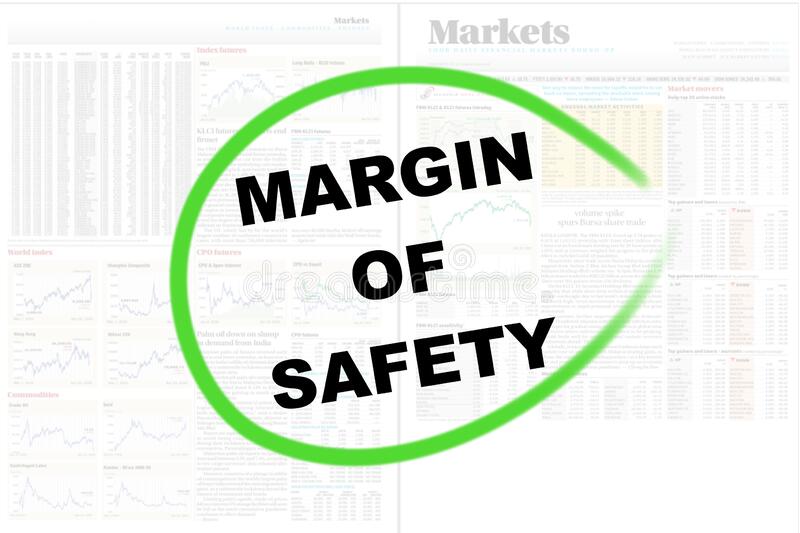Margin Of Safety
If it can go wrong, assume that it will
Margin Of Safety - Overview
Margin of safety is an engineering concept and is a measure of how much extra load will a structure actually take beyond what is intended.
It is also commonly applied in finance as where it is a measure of the difference between the intrinsic value of a stock and its market price. It is also applied in accounting in break-even analysis, and is a measure of how much output or sales level can fall before a business reaches its break-even point.
Margin of safety has wider applications in everyday life and can also be referred to as slack.
The basic colloquial meaning is:
Example 1. Air travel
Before the coronavirus pandemic I flew extensively around South East Asia and at least 4 times a year, return flights to the UK.
Having had one or two nasty incidents of nearly missing a flight I developed a routine of always getting to the airport at least an hour before the required time. I would have coffee and do some work in the lounge and use the waiting time productively. This was my margin of safety and it enabled to feel very relaxed and stress free.
One day, when I was in Singapore, I took a taxi to Changi Airport and upon arrival the taxi boot jammed and the driver could not remove my case and my laptop.
It took the driver and airport maintenance staff about one and a half hours to retrieve my baggage.
The taxi driver commented on how relaxed I was and ask me why I was getting stressed and angry, and I explained about my margin of safety.
I made the flight!
Example 2. Sales and Business Forecasting
For the first of my career I was a professional salesman and was required to produce monthly sales forecasts.
I very quickly realised that my forecasts were over optimistic and reflected my enthusiasm and positive expectation.
To counter this tendency I developed a heuristic what I called the rule of two.
THE RULE OF TWO Assume
that it will take twice as long to happen than you think it will, that it
will cost twice as much as you think it will, that the gain/profit/pleasure
will be half what you expect it to be. If it stacks up against this - then do it. If not, rethink!
Example 3. Renovating Old Houses
In the UK there are a lot of older properties. I have lived in several and have undertaken projects to renovate and improve these houses.
Each time I have applied "The Rule Of Two" and is has proved very helpful.
Not only does it ensure that I budget double what the builders and craftmen quote me for the work [obviously I don't tell them I have done this!] but I always assume there will be unforeseen issues and problems and also that it will take twice as long as the builder has indicated.
What actually has happened each time is that the final cost has been somewhere between the original quote and my increase budget, and the same on the completion date.
Applying The Margin Of Safety
Outside of the worlds of engineering, business and investment how can we usefully apply the mental model of margin of safety?
The first and most obvious application is to keep us safe.
"Safe" may not in the everyday sense be about saving life but it is everything to do with reducing stress, peace of mind and the management of our own and other's expectations.
So in this instance we are thinking about "safe" in terms of quality of life.
Here are 3 pointers:
[1] Be Careful In Your Assumptions And DON'T Exclude The Fat Tail
In the Pareto Principle we considered The Bell Curve and what is referred to as standard distribution and the 80/20 Curve referred to as a power law distribution.
You don't have to be a statistician to understand and benefit from understanding that there are many situations where the Bell Curve does not apply and the 80/20 curve does - and this is because there is a relatively high probability of extreme outcomes.
Extreme outcomes - such as at time of writing the corona-virus pandemic - can and do occur.
Clearly there are limits as to how far it is reasonable and, more to the point, affordable to put in place contingencies, but you should at least make a conscious choice to do nothing.
[2] Ask: "...and then what?"
Second Order Thinking goes beyond the obvious and seeks to avoid unintended consequences by asking: "...and then what?"
This is more deliberate thinking and is about seeing things that other people don't or can't see.
It is about thinking in terms of interactions and time, and considering the consequences of a potential decision or action. It is only by thinking like this that you can build in your margin of safety.
[3] Think About Your Objective In Reverse
Apply Inversion. Instead of thinking forward about what you need to do to get what you want, you spin it round and in reverse, away from your objective, about what you don’t want to happen.
By simply thinking about what you want to avoid or the opposite of what you want to achieve, you can plan effectively to prevent failure and ensure that you have included a margin of safety.
Return to: Mental Models
LATEST ARTICLES
The Battle For Your Mind - How To Win Inner Freedom In A Digital Age Of Distraction
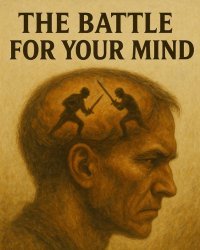 From External Events to Inner Events. We often think of “events” as things that happen out there: the traffic jam, the rude comment, the delayed email reply. But what truly shapes our experience is wh…
From External Events to Inner Events. We often think of “events” as things that happen out there: the traffic jam, the rude comment, the delayed email reply. But what truly shapes our experience is wh…How to See Your Thoughts Without Becoming the Story
 A Practical Guide to Thought-Awareness. You can spend your life inside the stories of your mind without ever learning how to see your thoughts clearly and objectively. Most of the stuff we tell oursel…
A Practical Guide to Thought-Awareness. You can spend your life inside the stories of your mind without ever learning how to see your thoughts clearly and objectively. Most of the stuff we tell oursel…The Collison Decision Matrix - A Simple Framework for Better Choices
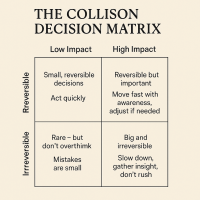 The Collison Decision Matrix Is A Practical Everyday Thinking Tool. Most of us spend a surprising amount of time worrying about decisions. From small ones such as what to wear, what to eat, what to te…
The Collison Decision Matrix Is A Practical Everyday Thinking Tool. Most of us spend a surprising amount of time worrying about decisions. From small ones such as what to wear, what to eat, what to te…The Power Of Asking The Right Question
 The Power Of Asking The Right Question Lies In The Quest For Insight. To experience the power of asking the right question you must develop the practice of asking questions. The best way to improve th…
The Power Of Asking The Right Question Lies In The Quest For Insight. To experience the power of asking the right question you must develop the practice of asking questions. The best way to improve th…Site Pathways
 Here is a site pathway to help new readers of Zen-Tools navigate the material on this site. Each pathway is based around one of the many key themes covered on this site and contain a 150 word introduc…
Here is a site pathway to help new readers of Zen-Tools navigate the material on this site. Each pathway is based around one of the many key themes covered on this site and contain a 150 word introduc…How To Live With Contradiction - Beyond Thought Let Stillness Speak
 A major impact on so many peoples' lives is the situational contradiction of unfilled realistic expectations. So where does all this leave us? Well here we are, with mental equipment that is more lim…
A major impact on so many peoples' lives is the situational contradiction of unfilled realistic expectations. So where does all this leave us? Well here we are, with mental equipment that is more lim…How To Trust The Process Of Mindfulness - Right Now
 In mindfulness, the process isn’t some distant goal — it's what is happening right now. When we talk about how to trust the process of mindfulness the credibility of the process is heavily dependent…
In mindfulness, the process isn’t some distant goal — it's what is happening right now. When we talk about how to trust the process of mindfulness the credibility of the process is heavily dependent…Inner Mastery For Outer Impact - Mental Clarity For Effective Action
 Insights only matter if they translate into consistent action. In a world crowded with quick fixes and motivational soundbites, the theme “Inner Mastery for Outer Impact” calls us to something more e…
Insights only matter if they translate into consistent action. In a world crowded with quick fixes and motivational soundbites, the theme “Inner Mastery for Outer Impact” calls us to something more e…The Wise Advocate - Helping You Achieve The Very Best Outcome
 The focus of your attention in critical moments of choice either builds or restricts your capacity for achieving the best outcome. When we talk of 'The Wise Advocate' its easy to think of the consigl…
The focus of your attention in critical moments of choice either builds or restricts your capacity for achieving the best outcome. When we talk of 'The Wise Advocate' its easy to think of the consigl…Trust The Process - Beyond The Cliche
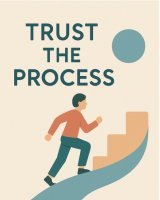 The phrase "trust the process" has become a cliche, the woo-woo mantra of the "self help" industry. Those three little words feel like they ought to mean something useful but hidden behind them are a…
The phrase "trust the process" has become a cliche, the woo-woo mantra of the "self help" industry. Those three little words feel like they ought to mean something useful but hidden behind them are a…The Dopamine Delusion - Why Anticipation Beats Achievement
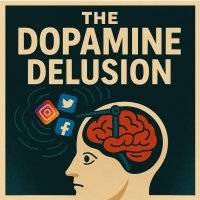 The thrill we feel is not in the having, but in the wanting. The more we have, the more we want. The more things we acquire and the easier things get for us, the more discontent we feel. The more spo…
The thrill we feel is not in the having, but in the wanting. The more we have, the more we want. The more things we acquire and the easier things get for us, the more discontent we feel. The more spo…The Power Of Silence Is Experienced In Your Use Of Language
 Practise the "Beneficial Neurological Delay" for optimal comprehension. The power of silence is experienced in your use of language, specifically: - How you formulate the words you use to think and in…
Practise the "Beneficial Neurological Delay" for optimal comprehension. The power of silence is experienced in your use of language, specifically: - How you formulate the words you use to think and in…
